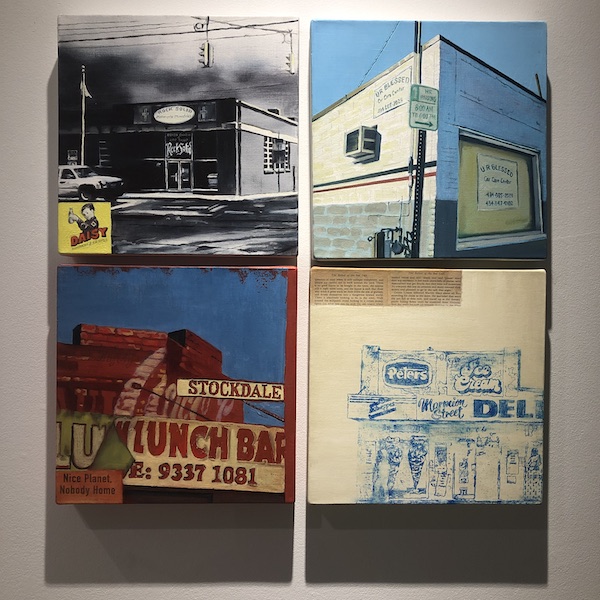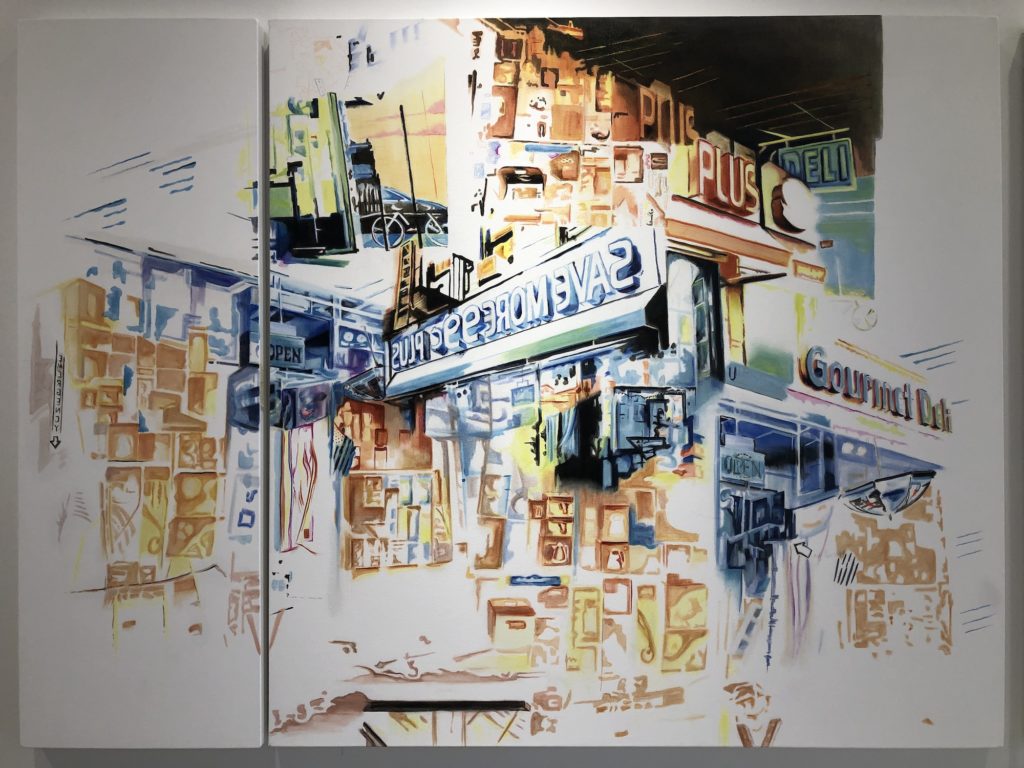‘Nexus: A Group Show’ gives Miranda Johnson an insight into the way three painters put theory into practice.
Painting and process
19 February 2020
- Reading time • 5 minutesFringe World Festival
More like this
- How to choose your Fringe World shows
- Sparkling piano bar just the tonic
- Two exhibitions too good to resist
Review: Gale Thackeray, Laura Mitchell, Harrison See, ‘Nexus: A Group Show’ ·
Spectrum Project Space, 15 February 2020 ·
Review by Miranda Johnson ·
The Fringe World exhibition, “Nexus: A Group Show”, is a glimpse into the sometimes mysterious world of the PhD by creative research, featuring the processes and creative research of three Edith Cowan University PhD candidates working within the medium of contemporary painting.
Artists Gale Thackeray, Laura Mitchell and Harrison See spent a month in residence at Spectrum Project Space, the outcomes of which are on show. The focus is on the relationship between academic research and artistic practice for each artist.

The exhibition presents resolved works, studies for works and visual representations of research conducted while the artists were in residence. It provides an insight into the artists’ methods, their ways of working, and their personal understanding of the relationship between theory and practice.
Each artist’s work is distinctly defined in the group exhibition. Thackeray’s realistic portraiture, images of domestic interiors and intimate portraits sit alongside See’s allegorical, dramatic representations in his painting, “The Waiting Room” (2020), with its blue-skinned alien-like deities.
The works seemed quite different and distinct at first, but on seeing them together I felt there was some common ground between the unreal and slightly alienated postures of Thackeray’s realistic figures and See’s aliens, which began to look more familiar, as though humanised by their surroundings.
Laura Mitchell’s “mashup” works focus on disused storefronts, community and neighbourhood hubs that were lost as supermarkets began to dominate the way we consume and purchase essential goods – another feeling of alienation and a slight disconnect from the everyday world. I felt a particular flash of recognition and nostalgia from Mitchell’s “Relevance Revealed: Homage to Garry Pumfrey and Carol Rudyard”, a meditation on not only the artists who have influenced her but also on a once vibrant space in my own neighbourhood, Cleaver Street Deli.
Similarities between the three artists also arise when considering their approaches to research and method. See and Mitchell’s mind-maps of their processes (both entitled “Residency Process Notes”) display notes, excerpts from texts, found images, and documentation representing the disparate ways in which research and imagery form essential parts of their practice. Thackeray’s working studio is also replicated here, easel and paints at the ready, making a similar comment on the importance of visual and mental processing that comes together during the act of making.
Accompanying the exhibition are works from the ECU Art Collection chosen by the artists with support from curators Sue Starcken and Stuart Elliott. The wide-ranging selection informs a large part of the exhibition, with influences from across decades and genres. Taken together, the exhibitions provide a cohesive and interesting glimpse into the intersections of research and the process of making.
“Nexus: A Group Show” continues until 28 February 2020 at Spectrum Project Space, Edith Cowan University (Mt Lawley).
Pictured top: Harrison See’s ‘The Waiting Room (oil and acrylic on loose canvas, 140x210cm). Photo: courtesy of the artist

and microspheres on five canvases 3645x1220mm, 2020). Photo: Courtesy of the artist
Like what you're reading? Support Seesaw.






